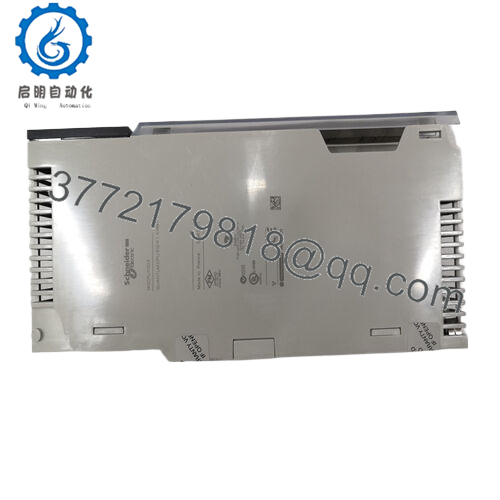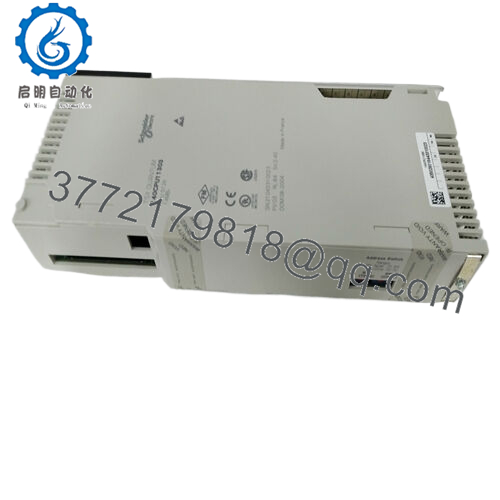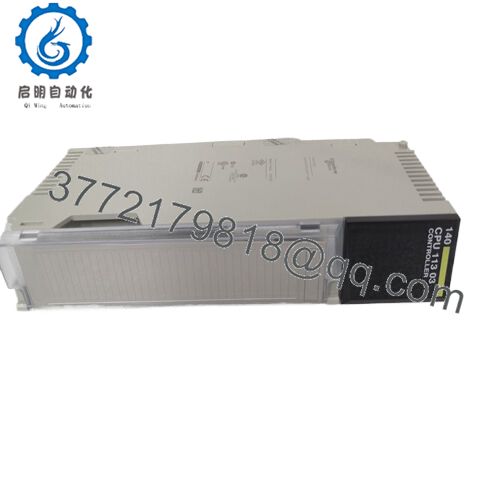Description
Real-World Use & Application Scenarios
The Schneider Electric 140CPU11303 is widely recognized in industrial automation environments where compact, reliable, and efficient processors are essential. It suits applications in manufacturing, water treatment, and process controls where consistent operation and communication with various distributed and local I/O are critical. This module addresses real-world challenges related to communication stability, processing reliability, and memory retention during power interruptions, making it ideal for small to mid-sized automation systems running on the Modicon Quantum platform.
Product Introduction & Positioning
The Schneider Electric 140CPU11303 is a Concept processor based on the 80186 microprocessor architecture designed for the Modicon Quantum automation system. Operating at a clock frequency of 20 MHz, it provides essential control and processing capabilities for automation tasks. The module features 368 kB internal RAM for program and data storage and includes built-in support for Modbus Plus and Modbus RS232 communication protocols.
Positioned as a cost-effective and reliable unit within the Quantum lineup, the 140CPU11303 supports foundational program sizes and local distributed I/O networking. It is suitable for automation professionals who need a processor capable of handling essential logic, communications, and I/O management without the complexity of larger, more powerful processors.
Key Technical Features & Functional Benefits
The 140CPU11303 provides up to 16,000 words of Ladder Logic program capacity and supports 8,192 discrete inputs/outputs with up to 9,999-word registers. Integrated watchdog timer of 250 ms enhances operational stability by monitoring CPU activity and resetting if an operational failure is detected. Its lithium backup battery offers a service life of 1.2 Ah and up to 10 years shelf life, guaranteeing data retention and timekeeping even during power outages.
Communication options include one Modbus Plus port and one Modbus RS232 port managed by high-capacity communication module processors, enabling persistent network connectivity essential for industrial applications. Configuration is streamlined via rotary switches enabling address and parameter settings, and front-panel slide switches control memory security and communication modes.
The module dissipates approximately 3.95 W of power, keeping energy consumption efficient while ensuring steady performance within a typical industrial temperature range of 0 to 60 °C.
- 140CPU11303
Detailed Technical Specifications
| Parameter | Value |
|---|---|
| Model | 140CPU11303 |
| Brand | Schneider Electric |
| Processor | 80186 microprocessor |
| Clock Frequency | 20 MHz |
| Internal RAM | 368 kB |
| Program Capacity | Up to 16,000 words (Ladder Logic) |
| Discrete I/O Capacity | 8192 inputs/outputs |
| Registers Capacity | Up to 9,999 words |
| Watchdog Timer | 250 ms |
| Battery Type | Lithium |
| Battery Life | 1.2 Ah service, 10 years shelf life |
| Communication Ports | 1 Modbus Plus, 1 Modbus RS232 |
| Power Dissipation | 3.95 W |
| Operating Temperature | 0 to 60 °C |
| Storage Temperature | -40 to 85 °C |
| Weight | Approximately 0.3 kg |
| Communication Module Processor | 2 NOM, NOE, CR, NMS |
| Markings | CE |
Related Modules or Compatible Units
140CPU11304 – Similar Concept processor with additional features.
140ADI12000 – Analog input module compatible with Quantum platform.
140AVO02000 – Analog output module for Modicon Quantum.
140DPN21100 – PROFIBUS DP communication module for remote networking.
Installation Notes & Maintenance Best Practices
Ensure the 140CPU11303 is mounted securely within a Modicon Quantum rack with proper orientation for ventilation. Configure communication settings via rotary and slide switches for address, communication modes, and memory protection before applying power. The backup battery should be checked periodically, especially in environments with frequent power interruptions, to maintain data integrity.
Routine inspection of status LEDs and watch for error conditions assists in early fault detection. Firmware and configuration updates should be performed in compliance with manufacturer instructions to optimize performance and security.




 WhatsApp: +86 16626708626
WhatsApp: +86 16626708626 Email:
Email:  Phone: +86 16626708626
Phone: +86 16626708626


